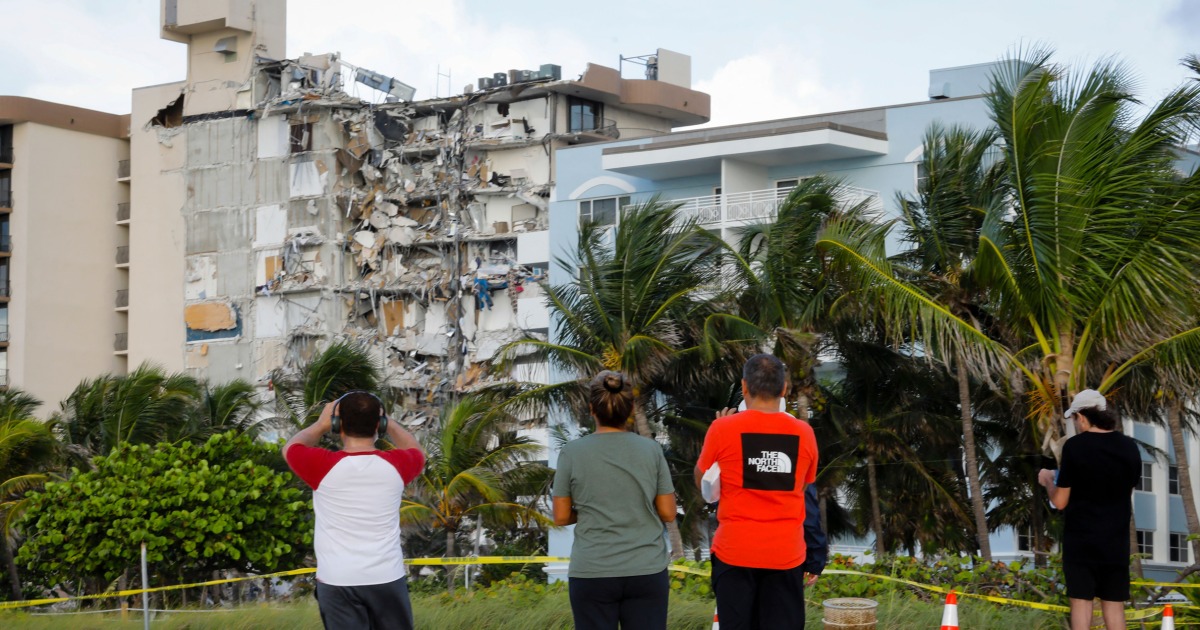Design flaws in the pool deck of the Surfside, Florida apartment building, where a partial collapse killed 98 people, put the building at risk of collapsing even before it was built, federal investigators said Thursday.
Poor roof construction in 1981 further weakened Champlain Towers South, the researchers said. And over the next four decades, corrosion, coupled with renovations that placed a heavier load than the platform was designed to support, made the building even more vulnerable, the researchers said.
“The conditions that existed on the pool deck slab at that time posed a serious safety concern for the building,” Glenn Bell, a senior fellow at the National Institute of Standards and Technology, said at a public meeting at the headquarters of agency in Maryland.
It is not yet clear whether those deficiencies directly caused the June 24, 2021 collapse (the final NIST report on the cause is not expected until May 2025). Champlain Towers South, built on a barrier island, suffered faulty construction and structural damage, including corrosion beyond the pool deck, according to an engineer who assessed the building three years before the collapse. Scientists have also documented salt water seeping into the building’s underground foundation and that the building had slowly sunk in the 1990s.
But preliminary analysis Outlined Thursday showed investigators consider the many flaws in the pool cover one leading hypothesis, among about two dozen, for what led a large section of the 12-story residential building to suddenly collapse in the middle of the night.
The pool cover plan “did not comply with the applicable building code,” Bell told the NIST National Building Safety Team Advisory Committee. «So from the beginning, the original structural design provided low margins of safety.»
An “improper” placement of steel reinforcement in the pool deck slab weakened it, Bell said. The renovations loaded the pool deck with heavy materials, including flower pots, palm trees, and sand, that the original design did not consider. Corrosion of the steel bars holding the concrete slab in place increased the risk of failure, Bell said.
“All of these factors combined to result in margins of safety and margins against failure in some areas of the pool that were critically low at the time of the collapse,” Bell said.
Investigators said they are also considering that the collapse could be due in part to design and construction deficiencies in the residential tower that led to the supports being overloaded. They are investigating the possible effects of climate change, including whether it played a role in the upward pressure of water on the building’s basement slab. And they’re looking at changes to the concrete and soil.
James Harris, another NIST researcher, said the «quality issues» that endangered Champlain Towers South were «disturbingly parallel» to factors that contributed to the collapse of the elevated walkways at the Hyatt Regency Hotel in Kansas City in 1981, around the time Champlain Towers South was built.
Martin Langesfeld, whose sister and brother-in-law were killed, attended Thursday’s meeting via video and said NIST was taking too long to find answers. he quoted plans to build a luxury skyscraper at the Champlain Towers South site, construction that could begin before the final NIST report is issued.
“If new development goes ahead and the land is built on while it is deemed unsafe and another building collapses, it will be left to NIST, the City of Surfside, the State of Florida and the federal government,” Langesfeld said.

